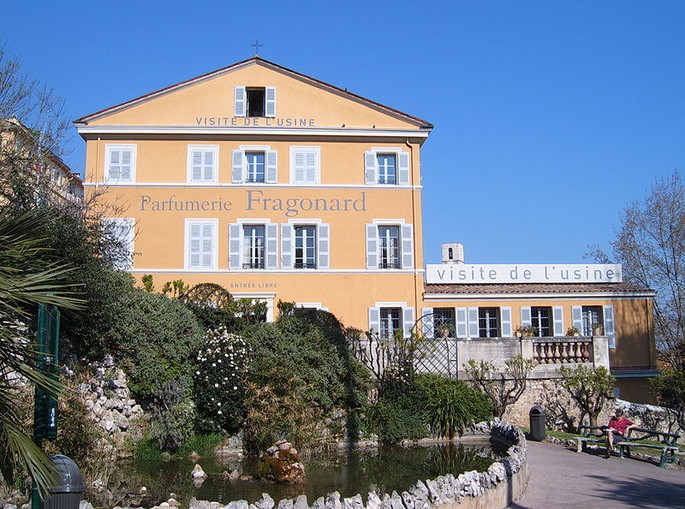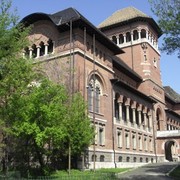Grasse is a major city in the middle of the French Riviera country, located in western Alpes-Maritimes 12 km north of Cannes on the Mediterranean coast. The former habitat (from the seventeenth century to the eighteenth century) mainly concentrated in the city center as limited rise buildings in narrow and dark alleys coexists with the villas and mansions of the nineteenth century, memories of the first tourists of the city and modern houses, signs of population growth mainly in hamlets around the center. Among the locations of ancient olive trees and flower crops the habitat disperses. The town has significant forest areas: one quarter of the territory is classified communal nature reserve.
History of perfumery
In the Middle Ages, Grasse specialized in leather tanning. Once tanned, the leathers were often exported to Genoa or Pisa, cities that shared a commercial alliance with Grasse. Several centuries of this intense activity witnessed many technological advances within tanning industries. The hides of Grasse acquired a reputation for high quality. But the leather smelled badly, something that did not please the glove wearing nobility. This is when Galimard, a tanner in Grasse came up with the idea of scented leather gloves. He offered a pair of scented gloves to Catherine de Medici who was seduced by the gift. Therefore, the product spread through the Royal Court and high society and this made a worldwide reputation for Grasse.
The seventeenth century became the heyday of "Glovers Perfumers'. However, high taxes on leather and competition from Nice brought a decline for the leather industry in Grasse, and production of leather fragrance ceased. The rare scents from Grasse (lavender, myrtle, jasmine, rose, orange blossom and wild mimosa) did win the title for Grasse as the perfume capital of the world. Harvesting jasmine was a labor-intensive business only a few decades ago. Flowers had to be hand picked at dawn, when their scent is the most developed and immediately to be treated by cold enfleurage.
In the middle of the eighteenth century, the perfumery was experiencing a very important development. Leading companies are dating from this period including oldest French perfumerie and third oldest perfumerie in Europe, Galimard established in 1747. Introduction of new production methods turned perfume making into a real industry that could adapt to new market demands. In the nineteenth century, the raw materials began to be imported from abroad.
During the twentieth century the creation of synthetic products brought the democratization and affordability of perfumes and their spin-offs; (shampoos and deodorants, cream (pharmaceutical) and detergents, food flavoring for cookies, ice cream and dairy products, beverages, convenience foods, confectionery, preserves and syrups). In 1905, six hundred tons of flowers were harvested while in the 1940s, five thousand tons were produced annually. However, in early 2000, production was less than 30 tons for all flowers combined.
Grasse is the centre of the French industry and is known as the world's perfume capital (la capitale mondiale des parfums). Many "noses" (or, in French, "Les nez" (plural)/"Le nez" (singular)) are trained or have spent time in Grasse to distinguish over 2,000 kinds of scent. The main activity of perfumery in Grasse is in the production of natural raw materials (essential oils, concretes, absolutes, resinoids and molecular distillation) and the production of concentrate, also called the juice. A concentrate is the main product that when diluted in at least 80% alcohol provides a perfume. Also food flavorings, which developed since the 1970s, account for over half of production output today.
However, during the 1960s and 1970s large international groups gradually bought up local family factories (Chiris, Givaudan-Roure and Lautier, for example). Soon after their production has often been relocated overseas. Just 30 years ago most companies were focused on the production of raw materials. However an overwhelming majority of the modern fragrances contain synthetic chemicals in part or in whole. Grasse perfume companies have therefore adapted by turning to aromatic synthesis and especially to food flavorings and successfully ended a long stagnation. However, Grasse perfume industry cannot compete against large chemical multinationals, but they benefit greatly from advantages of knowledge of raw materials, facilities, contractors, etc.. In addition, major brands like Chanel have their own plantations of roses and jasmine in the vicinity of Grasse.
A network of sixty companies employs 3,500 people in the city and surrounding area. Additionally about 10,000 residents of Grasse are indirectly employed by the perfume industry. Almost half of the business tax for the city comes from the perfume sector and that is ahead of tourism and services.
[Read also our last week's article about the city itself].













